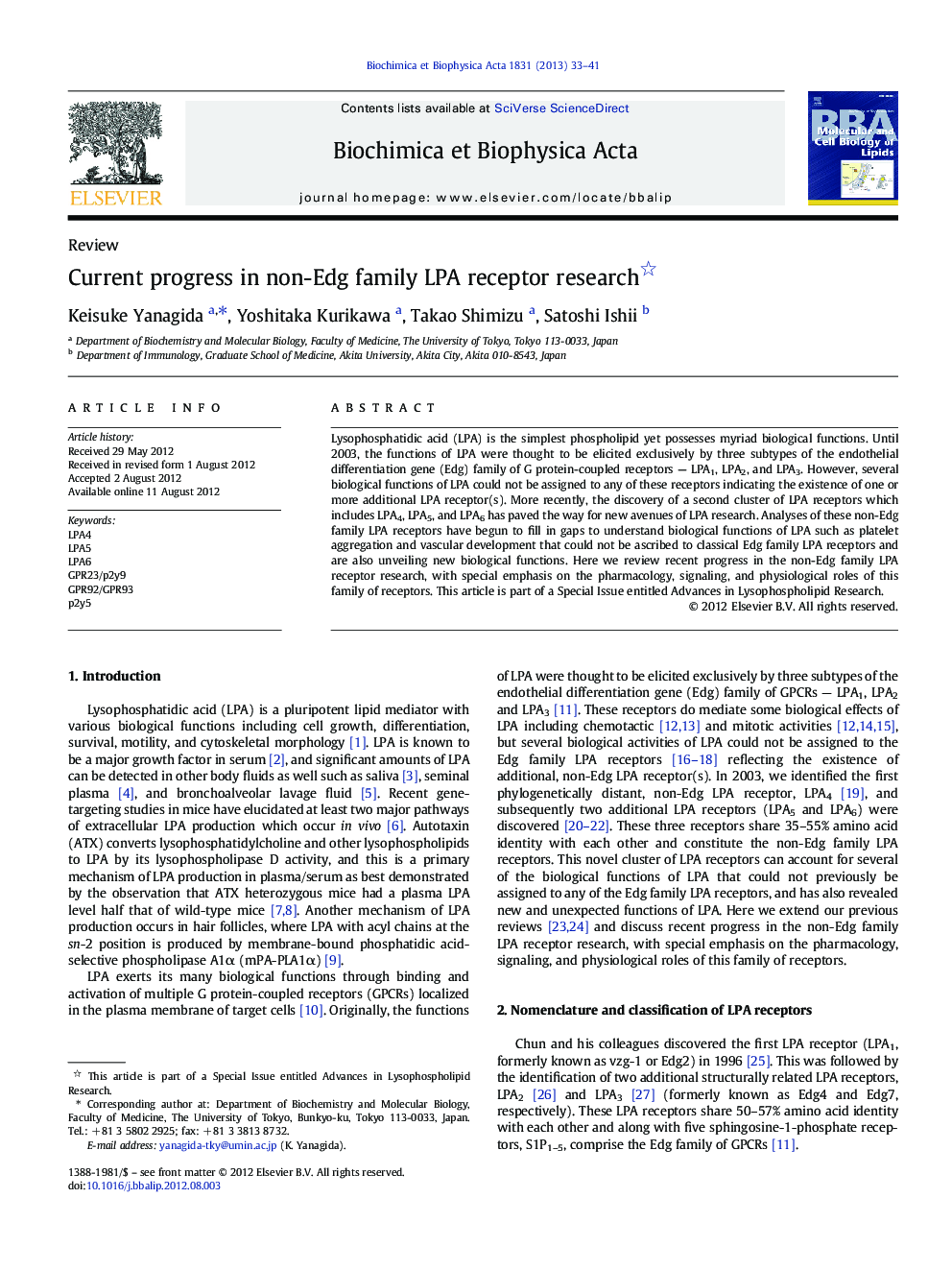| Article ID | Journal | Published Year | Pages | File Type |
|---|---|---|---|---|
| 1949311 | Biochimica et Biophysica Acta (BBA) - Molecular and Cell Biology of Lipids | 2013 | 9 Pages |
Lysophosphatidic acid (LPA) is the simplest phospholipid yet possesses myriad biological functions. Until 2003, the functions of LPA were thought to be elicited exclusively by three subtypes of the endothelial differentiation gene (Edg) family of G protein-coupled receptors — LPA1, LPA2, and LPA3. However, several biological functions of LPA could not be assigned to any of these receptors indicating the existence of one or more additional LPA receptor(s). More recently, the discovery of a second cluster of LPA receptors which includes LPA4, LPA5, and LPA6 has paved the way for new avenues of LPA research. Analyses of these non-Edg family LPA receptors have begun to fill in gaps to understand biological functions of LPA such as platelet aggregation and vascular development that could not be ascribed to classical Edg family LPA receptors and are also unveiling new biological functions. Here we review recent progress in the non-Edg family LPA receptor research, with special emphasis on the pharmacology, signaling, and physiological roles of this family of receptors. This article is part of a Special Issue entitled Advances in Lysophospholipid Research.
► Recently identified non-Edg family of LPA receptors (LPA4, LPA5, and LPA6). ► Ligand selectivities of non-Edg family LPA receptors. ► Intracellular signaling evoked by the non-Edg family LPA receptor activation. ► Biological functions of non-Edg family LPA receptors.
